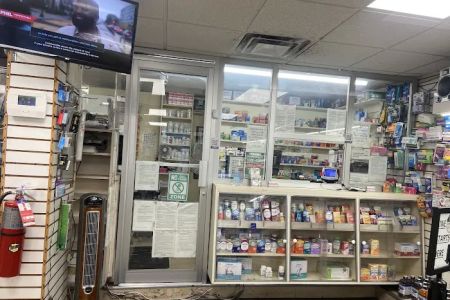Effective Pharmacy Inventory Management: A Personal Journey
As a pharmacy owner, managing inventory effectively is one of the most crucial aspects of ensuring smooth daily operations. When I first started my pharmacy, I underestimated just how vital a well-managed inventory system is to the overall success of my business. Over time, I realized that without proper inventory control, a pharmacy can quickly become disorganized, leading to waste, stockouts, and even loss of customer trust. Through trial and error, I’ve developed several essential pharmacy inventory management tips that have helped me streamline operations and keep everything running smoothly.
1. Implement an Efficient Inventory Tracking System
The first and most important step in managing pharmacy inventory effectively is having a reliable tracking system in place. Whether you’re using manual records, spreadsheets, or sophisticated pharmacy management software, it’s essential that you can easily track inventory levels, expiration dates, and reorder points. Early in my career, I used spreadsheets to track stock, but as the business grew, this became cumbersome and prone to error. That’s when I decided to implement a pharmacy management software system.
Investing in automated pharmacy software has been a game changer. It allows me to track everything from drug quantity to expiry dates automatically. This helps reduce human error, ensures I never run out of essential medications, and even alerts me when stock is getting low, saving time and preventing costly stockouts.
2. Regular Stock Audits: The Key to Accurate Inventory
At first, I underestimated the importance of regular stock audits. However, after a few instances where inventory discrepancies led to overstocking or stockouts, I quickly learned the value of periodic checks. I now perform stock audits on a regular basis, typically once a week, to ensure that our physical inventory matches our system records.
These audits don’t just involve counting pills and bottles; they also give me a chance to check for expired or damaged products. This step is vital because expired medications can be harmful to patients, and damaged products are just wasted resources. By staying on top of these audits, I ensure that my pharmacy is always stocked with the right products in good condition, and I can quickly address any discrepancies.
3. Establish Minimum and Maximum Stock Levels
One of the most important inventory management strategies I’ve implemented is establishing minimum and maximum stock levels for each medication. This helps prevent both overstocking and understocking, two issues that can disrupt pharmacy operations. For example, there are certain medications that are in high demand, and it’s essential to have enough stock to meet customer needs. But having too much stock can lead to waste and expiration problems.
To determine these levels, I used historical sales data, seasonal trends, and manufacturer lead times. By factoring in how often certain medications are dispensed, I set my reorder points accordingly. With this system in place, I’ve been able to maintain optimal stock levels, ensuring that my customers never leave empty-handed, while also minimizing waste.
4. Establish Strong Supplier Relationships
A good relationship with your suppliers is vital in ensuring timely delivery and cost-effective pricing. In my experience, maintaining open communication with suppliers has made a world of difference. There have been times when I’ve faced unexpected spikes in demand, and having a reliable supplier who can quickly replenish stock has saved me from losing customers.
I also recommend regularly reviewing and negotiating supplier contracts. By maintaining transparency and discussing terms, such as discounts for bulk orders or extended payment terms, I’ve been able to optimize my pharmacy’s cash flow. Additionally, when a product is out of stock, a good supplier relationship can help me get timely updates and work on alternative solutions.
5. Optimize Storage Space for Better Organization
Effective storage is often overlooked in pharmacy inventory management, but in my experience, it’s just as important as having a good tracking system. Organizing inventory in a way that makes it easy to locate and access medications not only saves time but also reduces the chances of stock mismanagement.
In my pharmacy, I’ve optimized storage by categorizing medications based on therapeutic classes and ensuring that frequently dispensed drugs are easily accessible. I’ve also created designated spaces for controlled substances, which helps meet regulatory requirements and ensures proper security. This organization strategy makes it easier to quickly perform audits, stock replenishment, and identify items that are nearing their expiration date.
6. Use Just-in-Time Inventory for High-Margin Drugs
Just-in-time (JIT) inventory is a strategy I’ve found particularly useful for managing high-margin medications, such as specialty drugs. With JIT, I don’t overstock on expensive medications but instead order them based on real-time customer demand. This approach helps prevent tying up cash in inventory while ensuring that I have the medications my patients need.
The JIT method works best when combined with a reliable inventory management system, as it allows me to track customer demand patterns and plan reorders accordingly. For instance, I use our software to predict demand trends for these high-cost drugs based on seasonal fluctuations, patient prescriptions, and doctor requests. This approach has significantly reduced the cost of holding unnecessary inventory while still meeting patient needs efficiently.
7. Educate and Involve Your Team
No matter how sophisticated your inventory management system is, the process will always involve human input. That’s why educating and involving your pharmacy staff in inventory management is so important. In my pharmacy, I conduct regular training sessions to ensure that everyone—from pharmacists to support staff—understands inventory protocols and knows how to use our inventory tracking software. This ensures that everyone is on the same page and contributes to efficient inventory management.
Additionally, I encourage my staff to communicate when they notice stock issues, such as low inventory levels or damaged products. By having an open channel for feedback, I can quickly address potential problems before they affect our ability to provide medications to customers.
8. Leverage Technology for Reorder Alerts
One of the best ways to stay on top of inventory management is to let technology work for you. Many modern pharmacy management systems offer automated reorder alerts, which notify you when stock is running low. These alerts help reduce the risk of stockouts, allowing me to reorder medications before they run out.
When I first started, I would manually track reorder points, but as the pharmacy grew, this became increasingly difficult. Now, with automated alerts in place, I can rest easy knowing that our inventory is always well-maintained. The system sends notifications via email or mobile apps, which helps me stay proactive in managing stock.
Conclusion: The Value of Proactive Inventory Management
Throughout my journey as a pharmacy owner, I’ve learned that effective inventory management is not just about keeping track of stock. It’s about building systems, relationships, and processes that ensure smooth operations and a positive experience for customers. By following these tips, I’ve been able to reduce waste, improve cash flow, and provide better service to my patients.
Inventory management is a continuous process that requires attention and adjustment. By implementing these strategies and staying ahead of trends, you can ensure that your pharmacy runs efficiently and continues to meet the needs of your community.














